More than in any other industry, merit has nothing to do with success. Especially when it comes to Cartridges. Here’s my The 6 Best Cartridges that you are not using:
#6. .338 Federal. By simply taking a .308 case and blowing it out to .338 Diameter, Federal created something very special. .338 projectiles are very naturally stable and aerodynamically slippery. They retain a great amount of accuracy and impact energy at long range… all while operating in a non-magnum, short action. A little more “push” than a .308, it’s kick isn’t as “sharp”. This is a fantastic cartridge, and one that would do especially well in a suppressed AR-10 platform. Think about that for a bit. Big Bore, without big recoil. Going bigger than .338 you start to get Nerf-like trajectories. This is pretty much that Sweet Spot for bullet diameter and weight, while still being able to reach out there and smack something down. A friend of mine took an elk with a .338 Federal at 600 yards. Dropped it like it was pole-axed. When he opened the Elk up he described the heart tissue was like “pudding”.
#5. .280 Remington. Also known as the 7mm Remington Express. Same cartridge, different name, because of “Marketing”. This is basically a .30-06 necked down to 7mm/.284 diameter. This is giving you better exterior ballistics than your .30-06, and more terminal effect at long range, with about the same felt recoil as your regular old .30-06. And you are not giving up as much bullet weight as you are with .270. It’s the perfect balance. But too many guys have never even heard of it. It’s not their fault though… There’s been a great deal of cartridges based on the .30-06 case, but the .280 Remington is probably the best of them.
#4. .35 Remington. What everyone considers a Lever Action cartridge, this one came out in 1906 and was first chambered in a Semi Auto hunting rifle. It wasn’t until 1950 that Marlin finally chambered their new 336 rifle in .35 Remington. This is a good upgrade over the .30-30, which has bullets typically from 150 grains to 170 grains… The .35 Remington has bullets typically from 180 grains to 220 grains, yet offers a similar trajectory to the .30-30. So shooters of the .30-30 can pick up the Big Brother and will be able to make good hits right out of the gate. There is a bit more felt recoil though. More Push but it’s not a sharp or unpleasant kick. It’s really quite moderate with velocities around 2100 to 2200 FPS. Like the .30-30 it’s, good out to about 400 yards, but is far more capable at harvesting larger game. It’s been referred to as Bear Medicine in Appalachia… referring to Black Bear. And for that purpose, it’s probably ideal. Especially in a light and handy Lever Action rifle.
#3. 7mm-08. By necking down the .308 case to .284″ you get pure magic that hasn’t really been explored enough. That 7mm slipstream is far superior to .30 caliber… Allowing for improved long range results. The only problem though is that while the 7mm-08’s projectile is smaller and lighter, it’s not as fast at the muzzle because the longer bullet is taking up more internal case volume. Because of this, it gets dismissed off hand by most shooters that take a cursory glance at it. It’s ideal for small framed shooters who don’t want recoil and don’t want to go down to .243.
#2. .257 Roberts. It was popular in years prior and is now in a rather deep decline. I was in Cabella’s the other day and mentioned .257 Bob and the guy had no idea what I was talking about. The Twenty Five Bob is based on the 7x57mm Mauser cartridge, necking it down to a Quarter Bore. The result is an accurate, flat shooting cartridge that gives very little recoil in return. I’ve seen guys shooting .257 Roberts at over 4000 FPS…. Exploding prairie dogs like grenades. And the cartridge can handle more typical 100 and 117 grain hunting projectiles at 3000 to 3500 FPS. Smoking hotness. More so than the more common/popular .25-06.
#1. .357 SIG. One of the more misunderstood loads out there. By taking a .40 cal case and necking it down to 9mm, SIG and Federal worked together to give you a cartridge that’s pushing that 9mm sized projectile about 200 FPS faster than the standard Luger/Para loads.
Now, it’s not really a .40 case, as it’s made with thicker walls to help withstand about 5,000 PSI higher in pressure than the .40. It’s often compared to the .357 Magnum – which is just an unfair comparison. You are not getting the heavier 158 grain projectile options out there. And it’s not really a 9mm as .357 SIG projectiles are more bluntly shaped than those for the Luger/Para loadings. It’s really it’s own little beast. Most common commercial loads are loaded down from peak performance, as ammo makers want to make sure that the projectiles stop within the FBI recommended 13 to 18 inches of Gel.
This reminds me of how Porsche down tuned the Cayman. The Cayman was priced exactly between the entry level Boxster and the high end 911 sports car. It’s performance was also tuned to be exactly in between the Boxster and 911. It was the Average because it was Tuned to be Average. The reality is that you can take the Cayman, tune it to it’s full potential, and it’s going to stomp a mud hole in the higher end 911. See, the .357 SIG is much the same. There are loads for the SIG round that exceed 1700 FPS. Out of a shorter barreled auto pistol barrel, not some 6″ horse pistol. That is fantastic.
Now lets not just end the conversation with Velocity. There is more to it than that. Reliability is another important factor. A bottle necked cartridge is going to want to feed much easier as you have a smaller peg fitting into a much wider whole. (this is why no one wanted to come in sloppy seconds after Eightball) Also having that higher pressure impulse, the ejection is going to be much easier as well. There will be less case drag as the slide pulls away from the breech, so sticking cases are not going to be a problem like you can get in some 9mm and .40 loads.
Accuracy is where the .357 SIG wins. In talking with some US AIR MARSHALS, they discussed at length the importance of accuracy. After Reliability – which was a Pass or Fail for them – Accuracy was their #1 factor. Accuracy in a Firearm comes from Consistency, and that starts with the Ammunition. .357 SIG is remarkably consistent, making it naturally accurate. .45 and .40 are not naturally accurate. Throwing projectiles shaped more like Pumpkins and little Missiles, it’s quite an achievement that they are as accurate as they are. 9mm has an easier time of it. .357 SIG though, being accurate isn’t a challenge. Kenyan that’s running away from a fat kid… it’s just too easy for him because he’s build for it. Shooting at a full 25 yards, it’s far easier to make your hits with .357 SIG than with .40 cal even with the same gun. If money wasn’t an object for everyone, I’d suggest getting .357 barrels for all your .40 cal guns and never look back.
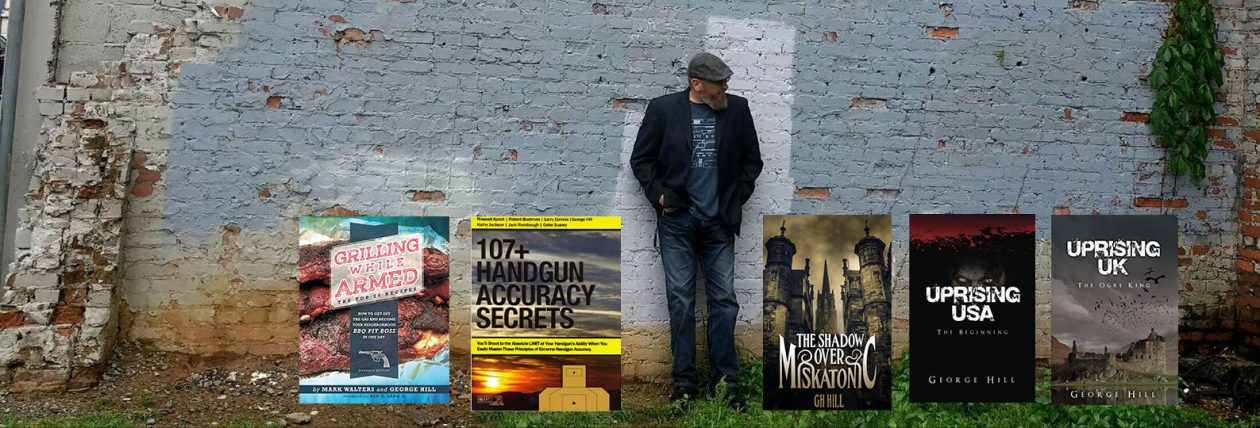
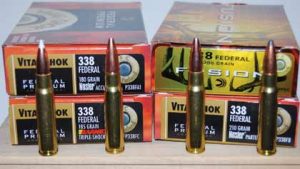
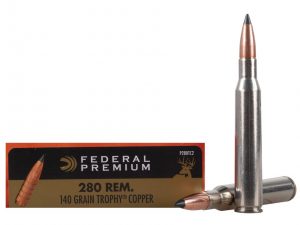
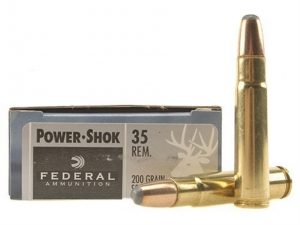
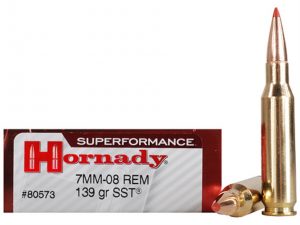
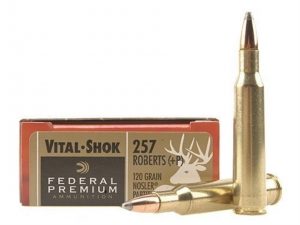
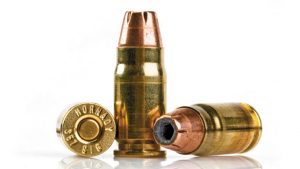

Never reloaded a necked handgun load. Any special care or extra steps, vs reloading e.g. 9mm, .40S&W, or .45ACP straight-ish wall cases?
Not really. The die for a bottle necked cartridge will have an expander ball… pretty straight forward stuff.
.357 SIG cases have a thin neck so you have to be very careful when resizing them as they will crumple easier than when sizing bottle necked rifle cartridges. Also after you start firing your reloads pay close attention to the neck and shoulder for splits or hairline stress marks.
7mm-08 is a great caliber for younger/smaller stature hunters but the problem is that ammo can be hard to come by and when it’s available it’s more expensive and are pretty much stuck with whatever projectile is in stock. I wish that it was more popular as I would get a rifle in that caliber for my daughters in a heartbeat.
Only hard to find locally. Online, there’s plenty of options.
LOOOOOOVE 357 Sig!
Love the 257 Roberts. I’m very interested in the 257 Weatherby. Do you know much about that cartridge? Any thoughts or info you might share? Thanks!!
Yeah, I love the .257 Weatherby. This list could actually all be Weatherby cartridges.
Out of all of the rounds Roy Weatherby came up with – one of the last was that .257WBY. And it was his favorite.
Super flat trajectory, very very accurate. And hits with massive shock effect and will drop even large game with authority.
It’s one of the world’s best cartridges.
I don’t say that lightly.
I love me some 7mm Weatherby Magnum. One problem is gun counter guys asking what kind of rifle I have, and when I tell them a Remington 721, they try to sell me 7mm Remington Mag ammo. Even though Remington never made the 721 in that caliber, either. But they made some in .300 H&H that rebarrel nicely. 8^)
The other issue that’s often brought up is ammo cost, which I think is overblown given typical usage. I doubt if my dad put more than 50 rounds through mine over the decades that he owned it, during which time it accounted for a couple of elk and any number of deer.
10-4 thanks brother!
…I concur with several on this list: The .257 Roberts was a staple rifle around my family growing up.
The .357 SIG is an amazing cartitridge. Even out of a GLOCK 32, this is cartridge shows amazing accuracy! Try it with full power loads from Underwood Ammo or Double Tap and you wil be amazed. I have Sig models 226 and 229, they both shoot this cartridge effectively as well. I have a Glock 24, with a .357 Sig barrel, it is like lighting bolts when this thing goes off!
No love for the 6mm Remington? As much as I love the .257 Roberts (in theory at least, I don’t own one) I have to say the .244 seems like the winner here. It’s almost identical in dimension, being a necked down 7mm Mauser, but 6mm bullet selection is a bit more generous and the SAAMI pressures on 6mm Remington are way above .257 Roberts levels. Of course with a modern rifle you can handload to whatever pressure doesn’t blow your gun up (or whatever pressure does blow it up, it’s your rifle) but I would still give the slight edge to the 6mm Remington.
It’s a fine round… But I just never dug it. Maybe because I didn’t like the rifle I tried it out in.
For those a bit more adventurous, the 257 Ackly improved, or the 6mms Rem Ackly improved, as well as their mother, the 7×57 AI, are wonderful!
My first rife was a Remington Model 600 in 6 mm that I purchased around 1967. If I dig deeply enough I could find cases I resized from Winchester .257 Roberts cases nearly 50 years ago. I know the arguments about the short barrel but the rifle is sure handy to carry. I still own it.
Yup. I’m digging the .338 Federal – definitely an overachiever in a short action bolt gun. It would make me smile in a rebarreled M1A as well. I think the .257 Roberts was a fine cartridge in its day. Not that it still isn’t but there’s nothing you can do with it that can’t be done with a 6mm or a 6.5mm bullet. When the .243 Winchester came out the old .257 Bob just about died out and with the expanding line up of factory ammo and reloading components in 6.5mm there’s little reason to choose the .257’s these days except nostalgia.
That is a good point. .243 has become quite good. Within the last 6 years or so it’s become the small bore jack of all trades.
I think another sleeper that would could be added to this list is the .338 Marlin Express. Pretty much a rimmed .338 Federal for the lever gun crowd – of which I is one ( grin ) .
It is. Marlin’s Express cartridges are good, and the .338 Marlin Express is my preference over the .308MX.